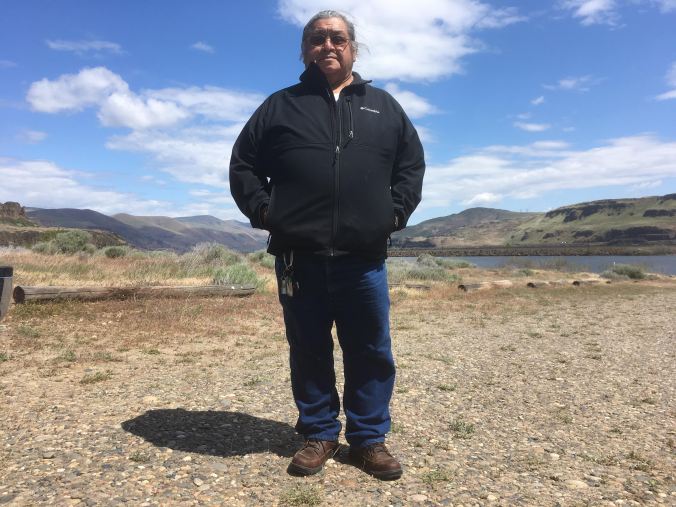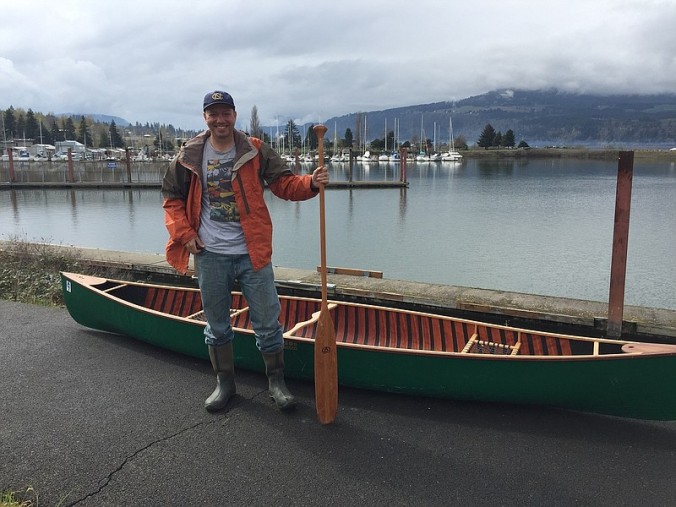By Neal Moore
ELLISTON, MT — I entered the half-empty bar and ordered a Bud in a bottle. There were a number of Bigfoot posters inside and when I gestured at them with my thumb the barkeep said something about an annual Bigfoot hunt and how it attracted folklorists from several counties.
A full color banner of the illusive Sasquatch was staring me down with the caption, Reigning Hide and Seek World Champion. It was all a bit weird, and the day was just too pretty, so I stepped back outside to take in the vista.
Across from U.S. 12 was a set of railroad tracks and a series of undulating green mountains that stretched right up to the Continental Divide, each dotted with larkspur and Douglas firs and lodgepole pines. There were huge rolling clouds and a bright blue sky and a succession-play of light and shadows as the clouds scuttled by along the road.
I was in Big Sky country.

Photo by Neal Moore. Inside the Lawdog’s Saloon, home of an annual “Bigfoot” and “Gopher” hunt for the past couple decades.
Here in the parking lot was a lineup of Harley Davidsons, American flags, 4×4 ATVs and just up from where I stood, a glistening “Lawdog’s Saloon” commercial sign with a bulldog and placard lettering that spelled out Gopher Hunt.
I was wondering what that could be about when, as if on cue, a slew of laughing kids arrived. Their pickups skidded to a halt and swaggering through the dust kicked up from the road they emerged with gopher tails in hand, hauling them in through the front swinging saloon doors by the armful, in great heaps up and onto the bar.
I came back inside and in time asked one of the lads about his haul.
“Hunting is who I am,”18-year-old Cameron Johnson told me. The kid was big on smiles but you could tell that he meant it, that he meant more than the pursuit of gopher.
Cameron was soon joined by friends Bridger and Tristan. An inseparable trio — you can tell when boys complete each other’s sentences — I would soon learn had taken second place.
I asked if we could step outside for an interview, if they could tell me what the hell a gopher hunt was?
“We come to the bar to sign up,” started Cameron. “And shoot gophers all day long until five and then…”
“…Make sure you cut the tails off…” added Bridger.
“…And then, yeah, you gotta cut the tails off – that’s how they get the count,” completed Tristan.
But the boys readily admitted they’d been late on the draw.
Cameron shrugged when they brought this up. “Well, we got here at twelve and it started at eight.”
“In the morning,” said Tristan.
“Yeah, eight in the morning,” continued Cameron. “So, we were a little bit behind, but we still got second.”
I had already overheard them. The boys had won $50 plus the promotional Coors and SKYY shirts they were now wearing. But I asked them anyway. “How many did you shoot? Did I hear fifty?”
“Yeah,” confirmed Cameron. “We shot fifty.”
“And then you bring the tails back, onto the bar?”
“Yeah, you bring them back,” continued Cameron. “And Mike, the owner, counts them. And he tells you what kind of place you get.”

Photo by Neal Moore. The Lawdog’s Saloon commercial sign lights up in the parking lot in preparation for a night of drinking and singing and counting gopher tails.
“So, fifty gophers – 2nd place. Do you think if you’d have been here on time, you could have got 1st?”
All three nodded.
“Yeah, we would’ve,” settled Cameron. “’Cause he dropped his gun on a rock, too.”
Cameron and Tristan motioned to Bridger.
As if to explain, Bridger said, “Yeah, that’s what happens.”
“He knocked his scope off,” reported Tristan. “So, we had to – it was pretty much two shooters there.”
By this time, I was desensitized to the wholesale slaughter of the local gopher population, weighing it out in my mind that here in Montana, this must be a rite of Spring. And I found myself feeling bad for the kid with the wispy beard and the aw-shucks grin. So I tried to shift the blame to the weather.
“I overheard somebody talk about the tall grass. That we’d had a lot of rain here. Tall grass,” I motioned with my hands to Bridger, demonstrating growing grass. “That interfered with the gopher hunting, right?”
“Oh yeah, definitely.”
“You couldn’t really see them too much,” said Cameron. “They ain’t much taller than the grass, so.”
“Yeah, you’re out in the field tryin’ to kill gopher, and they’re layin’ in the grass after you kill them, and you can’t see them.”
“What do you shoot gophers with?”
“Me and Tristan here, we’re shootin’ .17s and Bridger’s shootin’ a .22.”
I nodded as if I concurred, as if I knew exactly what they were talking about.

Photo by Neal Moore. An unused entry form for the Annual Gopher Hunt, a tradition in these parts stretching years back — although this is a first for Mike Jacobson, the newly minted owner of the Lawdog’s, soon to be renamed the Spotted Dog Saloon.
“Okay – lessons learned for next year? What would you do differently?”
The three boys hung their heads.
“Ah, show up on time,” said Cameron.
“Yeah, we’d show up on time for sure,” said Tristan.
Bridger brought his head up. “Don’t drop your gun.”
“And make sure you have plenty of ammo,” said Tristan.
“About hunting in general,” I shifted. “It’s sort of like, from what I’ve been told, a spiritual experience. What would you say about hunting in general?”
“Hunting,” offered Cameron. “Well, it’s a great time. It’s who we are,” the boy said, bringing his me to a we. “You do it for a pastime. Well, I almost failed school because of hunting. Like, it’s what I love to do.”
And Tristan was nodding. “It’s something you hear about, and you think, yeah, that’s cool. But then you go out and do it and it’s a totally different experience.”
“Yeah,” said Cameron. “No one really knows until they’re out there. With a bow and elk.”
Bridger was looking left out of the conversation, so I prompted him back in.
“Okay, Bridger, what would you say?”
“Well, I don’t hunt much. I rifle hunt. I’ve never been bow huntin’. Bow huntin’s a lot different. I don’t know, I don’t hunt a lot.”
“Okay, but today you did?”
“Yeah, I shot some gophers.”
I brought my final question back out to the group. “How would you explain how you feel when you’re out there?”
“It feels a lot different,” Cameron said, referring to his beloved elk. “They’re a lot bigger than you. There’s way more out there than just yourself. There’s just so much more to experience. And you see the views of stuff, you know, on the internet. You see pictures of animals. But you go out there, and it’s just so much more surreal.”
“You see people in the city talkin’ about it,” said Tristan. “And they’re, you know, surrounded by concrete and steel, and once they come out here, they just can’t describe how beautiful it is.”

Photo by Neal Moore. From left to right, 2nd place Gopher Hunt winners Cameron Johnson, Bridger Wheat and Tristan Terrell pose for a picture outside the Lawdog’s Saloon.
For Cameron, for all three of these boys, hunting and the great outdoors was their freedom, their release, their adrenaline rush.
“Until they’ve got an elk sniffin’ on their back they just don’t know what it’s like,” Cameron told me. “When you’re bow huntin’ and they’re all around you at twenty yards. It’s a little crazy. It’s intense. It gets your blood pumpin’ for sure.”
This story was made possible by Andre de Kock.















 Photo by
Photo by 